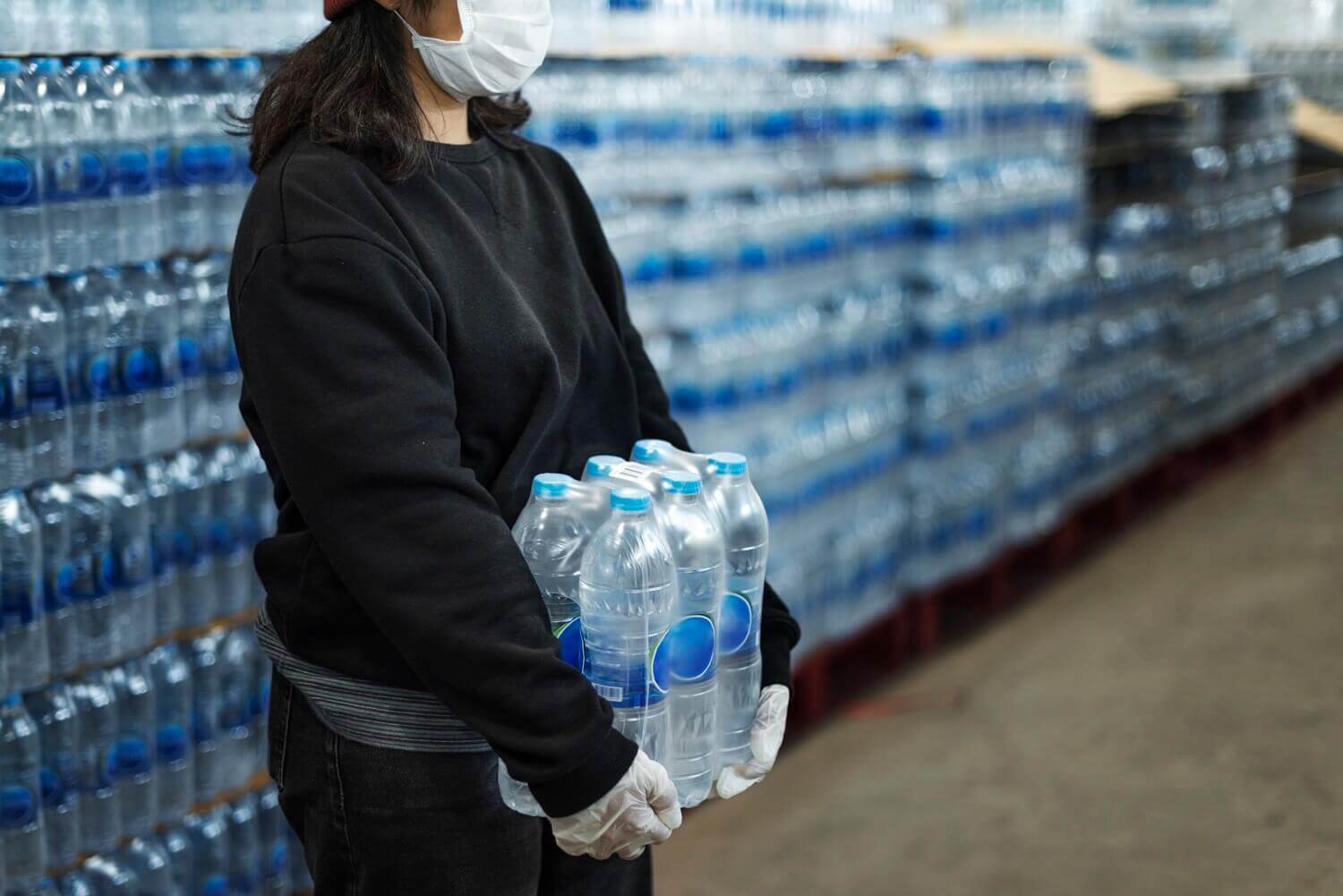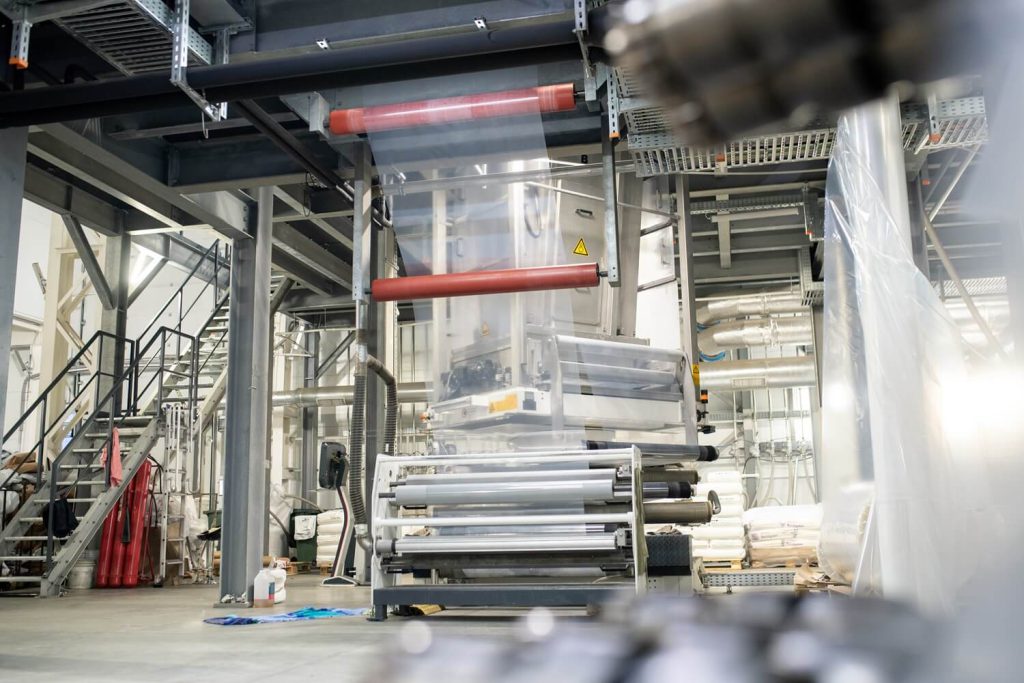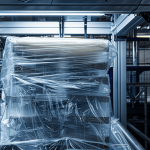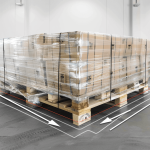
When it comes to product packaging, mastering shrink film application is important for businesses seeking to enhance both the protection and presentation of their products.
Shrink film, a versatile polymer material, offers countless benefits, from providing a tamper-resistant seal to improving the visual appeal of packaged goods.
In this comprehensive guide, we will explore the complexity of shrink film, its types, manufacturing processes, and practical applications.
Understanding Shrink Film
Before exploring the specifics of shrink film types and applications, it is essential to grasp the fundamentals of shrink film packaging.
Shrink film, also known as shrink wrap packaging, is a polymer-based material employed for packaging finished goods across diverse industries.
What sets shrink film apart is its unique ability to shrink tightly around products upon exposure to heat, creating a secure and protective barrier. This process not only safeguards the contents of the package but also serves as a visual indicator of tamper resistance, instilling confidence in consumers.
The Science Behind Shrink Film
When heat is applied to the film, its molecular structure undergoes a transformation, causing the polymer chains to align in a predetermined direction. This alignment causes the film to shrink uniformly around the enclosed item, conforming to its shape with precision.
The versatility of shrink film extends beyond its molecular properties, with various types and thicknesses available to suit diverse packaging requirements.
Versatility in Shrink Film Types
Shrink film is available in numerous types, thicknesses, and configurations, offering unparalleled flexibility in packaging design. From bi-axially oriented films that shrink equally in all directions to preferentially oriented variants tailored for specific applications, the options are virtually unlimited.
Additionally, advancements in shrink film technology have led to the development of formulations with enhanced characteristics such as puncture resistance, moisture barrier, and anti-fog properties.
Shrink Film Materials: PVC, Polyolefin, and Polyethylene
Three primary materials are used in the manufacture of shrink film, namely polyolefin (POF), polyethylene (PE), and polyvinyl chloride (PVC). Each material possesses unique characteristics and applications and offers unique advantages and considerations for packaging professionals.
1. Polyolefin (POF)
Polyolefin is a frontrunner in modern shrink film applications, owing to its versatility and eco-friendly attributes. Unlike PVC, polyolefin films are free of harmful emissions and offer superior recyclability, aligning with evolving sustainability standards.
POF films excel in providing durable, high-clarity packaging solutions suitable for a wide range of products, from consumer goods to perishable items.
2. Polyethylene (PE)
As a staple in the packaging industry, polyethylene covers a range of shrink film variants tailored to various requirements. High-Density Polyethylene (HDPE), Low-Density Polyethylene (LDPE), and Linear Low-Density Polyethylene (LLDPE) offer varying levels of strength, clarity, and flexibility.
While PE films boast cost-effectiveness and ease of processing, they may exhibit lower shrink rates and clarity compared to alternative materials.
3. Polyvinyl Chloride (PVC)
Once a universal choice for shrink packaging, PVC has gradually declined in popularity due to environmental and health concerns. While PVC exhibits lightweight and versatile properties, its chemical composition raises concern regarding emissions and recyclability.
Moreover, strict regulations and sustainability initiatives have prompted many industries to seek alternative materials for shrink film applications.
The Benefits of Shrink Film in Packaging
Beyond its material composition, the true value of shrink film lies in its numerous benefits for product packaging. From enhancing product presentation to safeguarding against tampering, shrink film offers excellent solutions for packaging challenges.
Let’s explore some of the notable advantages of using shrink film for packaging:
1. Protection: Durability and Security
Shrink film serves as a strong barrier, protecting packaged goods from external elements and physical damage. Whether safeguarding fragile electronics or perishable food items, shrink film provides a layer of defense against moisture, dust, and tampering.
Additionally, cross-linked shrink films offer enhanced puncture resistance to ensure the integrity of packaged products throughout the supply chain.
2. Presentation: Visual Appeal and Branding Opportunities
In an increasingly competitive business environment, product presentation plays an important role in consumer purchasing decisions. Shrink film offers excellent versatility in packaging design, which allows for custom branding, high-quality graphics, and glossy finishes.
By leveraging shrink film’s aesthetic potential, businesses can promote their brand image and capture the attention of consumers.
3. Sustainability: Eco-Friendly Packaging Solutions
With sustainability becoming a key consideration for consumers and businesses alike, shrink film offers a compelling eco-friendly packaging solution. Polyolefin and polyethylene films, in particular, are recyclable and free from harmful emissions, aligning with sustainable packaging initiatives.
In this regard, businesses can reduce their environmental footprint and appeal to environmentally conscious consumers by adopting shrink film made from renewable materials and minimizing packaging waste.
4. Cost Reduction: Efficiency and Resource Optimization
Beyond its functional benefits, shrink film presents opportunities for cost reduction and operational efficiency. By streamlining packaging processes, minimizing material usage, and optimizing equipment performance, businesses can achieve significant savings in packaging costs.
From negotiating bulk discounts to fine-tuning film dimensions, proactive cost management strategies can yield tangible benefits for packaging operations.

Practical Considerations for Using Shrink Film
As businesses increase the use of shrink film, there are several practical considerations that require attention. From selecting the appropriate film type to optimizing packaging equipment, careful planning and execution are necessary.
Here are some key considerations to guide along:
1. Product Specifics
Before selecting a shrink film material, it is important to assess the unique characteristics of the products being packaged. Factors such as weight, shape, dimensions, and storage requirements influence the choice of shrink film type and configuration.
Businesses that align packaging solutions with product specifications can ensure optimal protection and presentation across various product lines.
2. Equipment Compatibility
Investing in suitable packaging equipment is necessary for maximizing the efficiency and effectiveness of shrink film applications. Whether utilizing manual, semi-automatic, or fully automated shrink packaging machines, businesses must ensure compatibility with their chosen shrink film material.
Regular maintenance and calibration of equipment are also a must for minimizing downtime and optimizing packaging throughput.
3. Environmental Considerations
Proper storage and handling of shrink film are critical to preserving its integrity and performance. Shrink film should be stored in a controlled environment, free from temperature extremes and moisture exposure. Moreover, businesses must adhere to recommended storage practices to prevent film degradation and ensure consistent packaging results.
By prioritizing environmental considerations, businesses can prolong the shelf life of shrink film and minimize material waste.
In a Nutshell
Mastering shrink film is strategically important for businesses aiming to enhance their product packaging capabilities. We hope this guide can help businesses to significantly improve product protection, presentation, and sustainability.
From addressing challenges in material selection to streamlining packaging processes, a proactive approach to the use of shrink film is a must for staying competitive in today’s competitive business environment.
As consumer preferences evolve and sustainability becomes increasingly important, the role of shrink film in packaging innovation will continue to expand and influence the future of product packaging for years to come.





